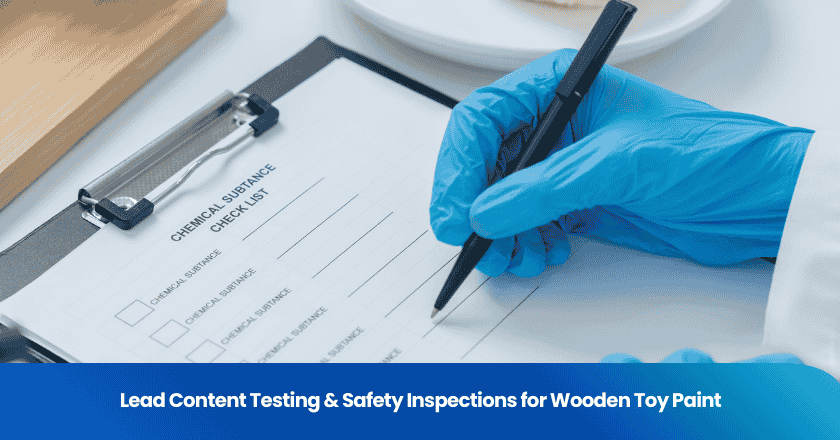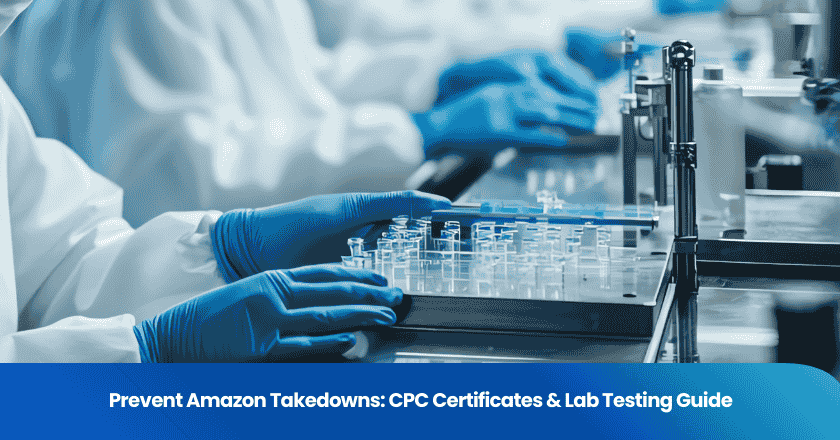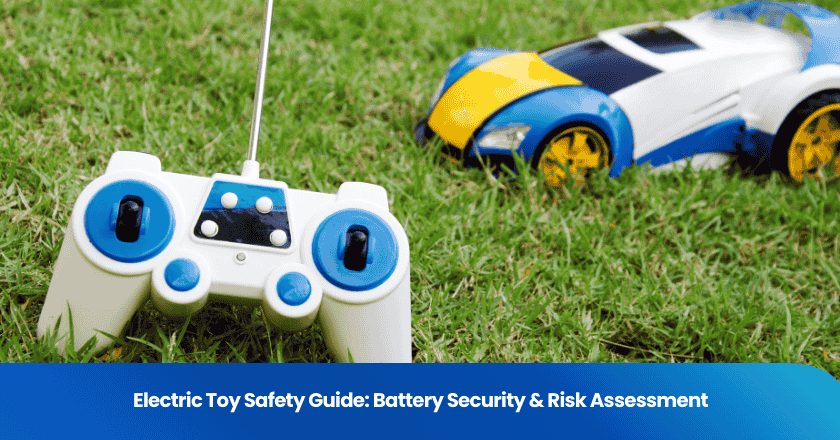
Selecting reliable product inspection companies in china requires clear priorities and careful attention to detail. Buyers often face challenges in verifying product quality, managing expectations, and reducing risk. A systematic approach helps streamline the decision-making process and ensures consistent results. Strong evaluation criteria, effective communication, and awareness of potential pitfalls support buyers in making confident choices.
Key Takeaways
• Define your product type and inspection goals clearly to guide the inspection process and ensure all important details get checked.
• Choose inspection companies with strong experience, relevant expertise, and valid accreditations to get reliable and accurate results.
• Compare companies by reviewing quotes, sample reports, and client feedback to find the best fit for your needs and budget.
• Maintain clear communication and set expectations with the inspection team to avoid misunderstandings and improve inspection quality.
• Watch out for red flags like unclear pricing, poor communication, or missing certifications to avoid costly mistakes and protect your supply chain.
Define Inspection Needs
Product Type
Buyers must first identify the exact product type before starting any product inspection process. Each product category, such as electronics, textiles, or toys, has unique standards and requirements. Understanding the product type helps determine which quality inspection methods suit the situation. For example, electronics may require detailed product testing, while garments might need a focus on stitching and fabric quality.
Tip: Create a checklist of product features and specifications. This list guides the inspection team and ensures that no detail gets overlooked during the quality inspection.
Some products need specialized inspections. For instance, a pre-production inspection can help verify raw materials and components before manufacturing begins. An in-process inspection monitors quality during production, catching issues early. A final inspection checks the finished goods before shipment. Each stage addresses different risks and supports consistent product quality.
Inspection Goals
Clear inspection goals help buyers communicate expectations to the product inspection company. Goals may include verifying compliance with international standards, checking for defects, or confirming packaging accuracy. Setting these goals ensures the inspection team focuses on the most critical aspects of product quality.
Buyers should decide which inspection types fit their needs. A pre-shipment inspection confirms that finished products meet requirements before leaving the factory. Some buyers may also request product testing to check performance or safety. Quality inspection goals should match the buyer’s priorities, such as reducing returns or meeting regulatory demands.
• Common inspection goals:
◦ Detecting defects early
◦ Ensuring product quality meets specifications
◦ Verifying labeling and packaging
◦ Confirming order quantities
A well-defined inspection plan supports better communication and reduces misunderstandings. Buyers who clarify their needs help the inspection company deliver accurate and reliable results.
Choosing Product Inspection Companies in China
Selecting the right inspection companies requires a thorough evaluation of several key factors. Buyers who understand these criteria can make informed decisions and reduce risks in their supply chain.
Experience
Experience stands as a critical factor when evaluating product inspection companies in china. Companies with many years in business often demonstrate stability and a proven track record. They have likely encountered a wide range of products and manufacturing challenges. Buyers should look for inspection companies that have handled similar products or industries. This background helps ensure that inspectors recognize common defects and understand specific quality standards.
Note: An experienced third-party inspection company can often anticipate potential issues before they escalate, saving buyers time and money.
Expertise
Expertise refers to the technical knowledge and skills that inspection companies bring to the table. Buyers should assess whether the company employs inspectors with relevant industry backgrounds. For example, inspecting electronics requires different skills than evaluating textiles or toys. A third-party inspection company with specialized teams can deliver more accurate and reliable results. Buyers benefit from working with professionals who understand the nuances of their products.
Accreditations
Accreditations and certifications provide assurance that inspection companies follow recognized standards. International certifications, such as ISO 9001, indicate a commitment to quality management. Buyers should verify that the third-party inspection company holds valid accreditations for the types of inspections required. These credentials demonstrate that the company meets industry benchmarks and operates with integrity.
| Accreditation Type | What It Means for Buyers |
|---|---|
| ISO 9001 | Quality management system |
| ISO/IEC 17020 | Inspection body competence |
| Industry-specific | Compliance with sector standards |
Service Scope
The range of product inspection services offered by a company can impact the buyer’s experience. Some inspection companies provide only basic quality inspection, while others offer a full suite of services. These may include pre-production inspections, in-process checks, pre-shipment inspections, and even product testing or laboratory analysis. Buyers should choose a third-party inspection provider that matches their needs and can adapt as requirements change.
Technology
Modern inspection companies leverage technology to improve accuracy and efficiency. Digital reporting tools, real-time photo documentation, and data analytics help buyers track product quality more effectively. Companies that invest in advanced technology can deliver faster results and greater transparency. Buyers should ask about the tools and systems used during the inspection process.
Tip: Inspection companies that use mobile apps or cloud-based platforms often provide quicker updates and more detailed reports.
Pricing
Transparent pricing models help buyers avoid unexpected costs. Inspection companies should provide clear quotes that outline what is included in the service. Some companies charge per inspection, while others offer bundled packages. Buyers should compare pricing structures and ensure there are no hidden fees. A reputable third-party inspection company will explain all charges upfront and help buyers understand the value they receive.
Reputation
Reputation reflects the experiences of other buyers who have used the company’s services. Buyers should research client feedback, online reviews, and industry references. Positive testimonials and repeat clients indicate reliability and trustworthiness. Inspection companies with a strong reputation often deliver consistent results and maintain high standards. Buyers can also request sample reports or case studies to evaluate the company’s performance.
Callout: A third-party inspection company with a solid reputation can provide peace of mind and support long-term business relationships.
By carefully evaluating these criteria, buyers can select inspection companies that align with their goals and ensure consistent product quality. The right third-party inspection partner helps safeguard the supply chain and supports successful sourcing in China.
Comparing Inspection Companies
Shortlisting
Buyers often start by creating a shortlist of potential product inspection companies in China. They gather recommendations from industry peers, online directories, and trade shows. Each company on the list should meet the buyer’s basic requirements, such as relevant experience and service scope. Buyers can use a simple table to compare key features, making it easier to identify which third-party inspection company aligns with their needs.
| Criteria | Company A | Company B | Company C |
|---|---|---|---|
| Years in Business | |||
| Industry Expertise | |||
| Service Coverage |
Quotes
After shortlisting, buyers request detailed quotes from each third-party inspection company. Clear communication helps avoid misunderstandings about pricing and services. Buyers should ask for a breakdown of costs, including any additional fees for urgent inspections or travel. Transparent quotes allow buyers to compare inspection companies fairly and select the best value for their budget.
Tip: Always confirm what is included in the quote to prevent unexpected charges later.
Sample Reports
Reviewing sample reports gives buyers insight into the quality and thoroughness of a third-party inspection. A well-structured report should include clear findings, photos, and actionable recommendations. Buyers should compare sample reports from different third-party inspection companies in China to evaluate consistency and attention to detail. This step helps buyers understand how each provider communicates results.
Client Feedback
Client feedback plays a crucial role in the decision-making process. Buyers should request references or read online reviews to learn about other clients’ experiences with each third-party inspection company. Positive feedback often signals reliability and professionalism. Negative reviews or unresolved complaints may indicate potential issues. By checking references, buyers gain confidence in their choice of third party inspection provider.
China Inspection Service Costs
Pricing Models
Buyers often encounter different pricing models when selecting a china inspection service. Some providers charge a flat fee per inspection, while others use a tiered system based on order size or inspection complexity. A few companies offer subscription packages for frequent inspections. Each model has advantages. Flat fees provide predictability. Tiered pricing can suit buyers with varying order volumes. Subscription plans may benefit those with ongoing sourcing needs.
Tip: Buyers should always ask for a detailed breakdown of costs before confirming any china inspection service. This step helps avoid confusion and ensures transparency.
Inclusions
A clear understanding of what each china inspection service includes is essential. Most providers cover basic visual checks, quantity verification, and defect detection. Some services also include packaging inspection, on-site testing, and compliance checks. Buyers should review the service agreement to confirm what is covered. Extra services, such as laboratory testing or rush inspections, may incur additional charges.
| Service Included | Standard | Optional |
|---|---|---|
| Visual Inspection | √ | |
| Quantity Verification | √ | |
| Packaging Check | √ | |
| On-site Testing | √ | |
| Compliance Verification | √ |
Value
The value of a china inspection service goes beyond the initial price. Reliable inspections help buyers avoid costly mistakes, such as defective shipments or regulatory issues. A trustworthy provider delivers accurate reports, timely communication, and actionable recommendations. Buyers should weigh the long-term benefits against the upfront cost. Investing in a quality china inspection service often leads to fewer returns, stronger supplier relationships, and greater peace of mind.
Callout: Choosing the right china inspection service protects both product quality and brand reputation.
Managing the Inspection Process
Communication
Effective communication forms the backbone of a successful product inspection process. Buyers should establish clear channels with the inspection team before any site visit. They often use email, instant messaging, or project management tools to share updates and documents. Regular check-ins help both sides stay informed about schedules, changes, or unexpected issues. When buyers provide detailed instructions and product specifications, inspectors can focus on the most important areas.
Tip: Buyers who respond quickly to questions from the inspection team often receive faster and more accurate reports.
Expectations
Setting clear expectations ensures that everyone understands the goals and standards for the inspection. Buyers should outline the specific criteria for product quality, packaging, and labeling. They may also define acceptable defect levels and reporting formats. A written checklist or inspection protocol helps prevent misunderstandings. When buyers clarify their requirements, inspectors can deliver results that match those needs.
| Expectation Type | Example |
|---|---|
| Quality Standards | No scratches, correct dimensions |
| Packaging | Proper labeling, secure cartons |
| Reporting | Photos, defect summary |
Collaboration
Collaboration between buyers and inspection companies leads to better outcomes. Buyers should treat the inspection team as partners rather than just service providers. They can share feedback after each inspection and discuss ways to improve future visits. Open dialogue helps resolve any issues quickly. When buyers involve suppliers in the process, everyone works toward the same goal—consistent product quality.
• Steps for effective collaboration:
a. Share feedback after each inspection.
b. Discuss improvements with the inspection team.
c. Involve suppliers in quality discussions.
Callout: Strong collaboration reduces misunderstandings and supports long-term success in product inspection and, when needed, product testing.
Red Flags and Pitfalls
Warning Signs
Buyers often encounter certain warning signs when evaluating product inspection companies in China. Recognizing these signals early helps prevent costly mistakes. Some companies may promise extremely fast turnaround times or unusually low prices. These offers can indicate a lack of thoroughness or hidden costs. Inconsistent communication also raises concerns. If a company fails to respond promptly or provides vague answers, buyers should proceed with caution.
Other warning signs include:
• Lack of valid accreditations or certifications
• Unclear or incomplete service agreements
• Reluctance to share sample reports or client references
• Overly generic inspection checklists⚠️ Tip: If an inspection company hesitates to provide documentation or avoids direct questions, buyers should consider this a major red flag.
A reliable provider maintains transparency and willingly shares credentials, processes, and references.
Common Mistakes
Many buyers make avoidable mistakes during the selection process. These errors can lead to poor inspection outcomes or unexpected expenses. Understanding common pitfalls helps buyers make better decisions.
| Mistake | Impact on Buyers |
|---|---|
| Focusing only on price | May sacrifice inspection quality |
| Ignoring service scope | Misses critical inspection steps |
| Overlooking reputation | Increases risk of unreliable results |
| Skipping contract review | Leads to misunderstandings |
Some buyers select the lowest-priced provider without considering expertise or service coverage. Others neglect to review sample reports, missing clues about report quality and detail. Failing to clarify expectations or inspection criteria often results in incomplete inspections.
Buyers who take time to verify credentials, review documentation, and communicate clearly with providers reduce the risk of costly errors.
By staying alert to warning signs and avoiding common mistakes, buyers protect their interests and ensure more reliable product inspections in China.
Selecting a product inspection company in China involves several clear steps. Buyers should define their inspection needs, evaluate companies based on experience, expertise, and reputation, and compare sample reports and pricing. Ongoing communication with the inspection team ensures expectations stay aligned.
Strong preparation and careful evaluation help buyers achieve better quality control and reduce risks. Following this process supports reliable sourcing and long-term business success.
FAQ
What documents should buyers prepare before booking an inspection?
Buyers should prepare a product specification sheet, order details, and quality requirements. Clear photos and packaging guidelines help the inspection team understand expectations. Providing these documents ensures a more accurate and efficient inspection process.
How early should buyers schedule a product inspection in China?
Buyers should schedule inspections at least one week in advance. Early booking allows the inspection company to arrange resources and coordinate with the factory. Timely planning helps avoid production or shipping delays.
Can buyers attend the inspection in person?
Buyers can attend inspections in person if they wish. Many inspection companies allow on-site visits. This approach helps buyers gain firsthand insights and build stronger relationships with suppliers and inspectors.
What happens if inspectors find defects during the inspection?
Inspectors document all defects in the report. Buyers review the findings and decide on the next steps. Options include requesting rework, negotiating compensation, or rejecting the shipment. Clear communication ensures effective resolution.
How do buyers verify the authenticity of an inspection company’s certifications?
Buyers should request copies of certifications and check their validity with the issuing organizations. Many certification bodies offer online verification tools. Authentic documents provide confidence in the inspection company’s credibility.
Grow your business with TradeAider Service
Click the button below to directly enter the TradeAider Service System. The simple steps from booking and payment to receiving reports are easy to operate.



